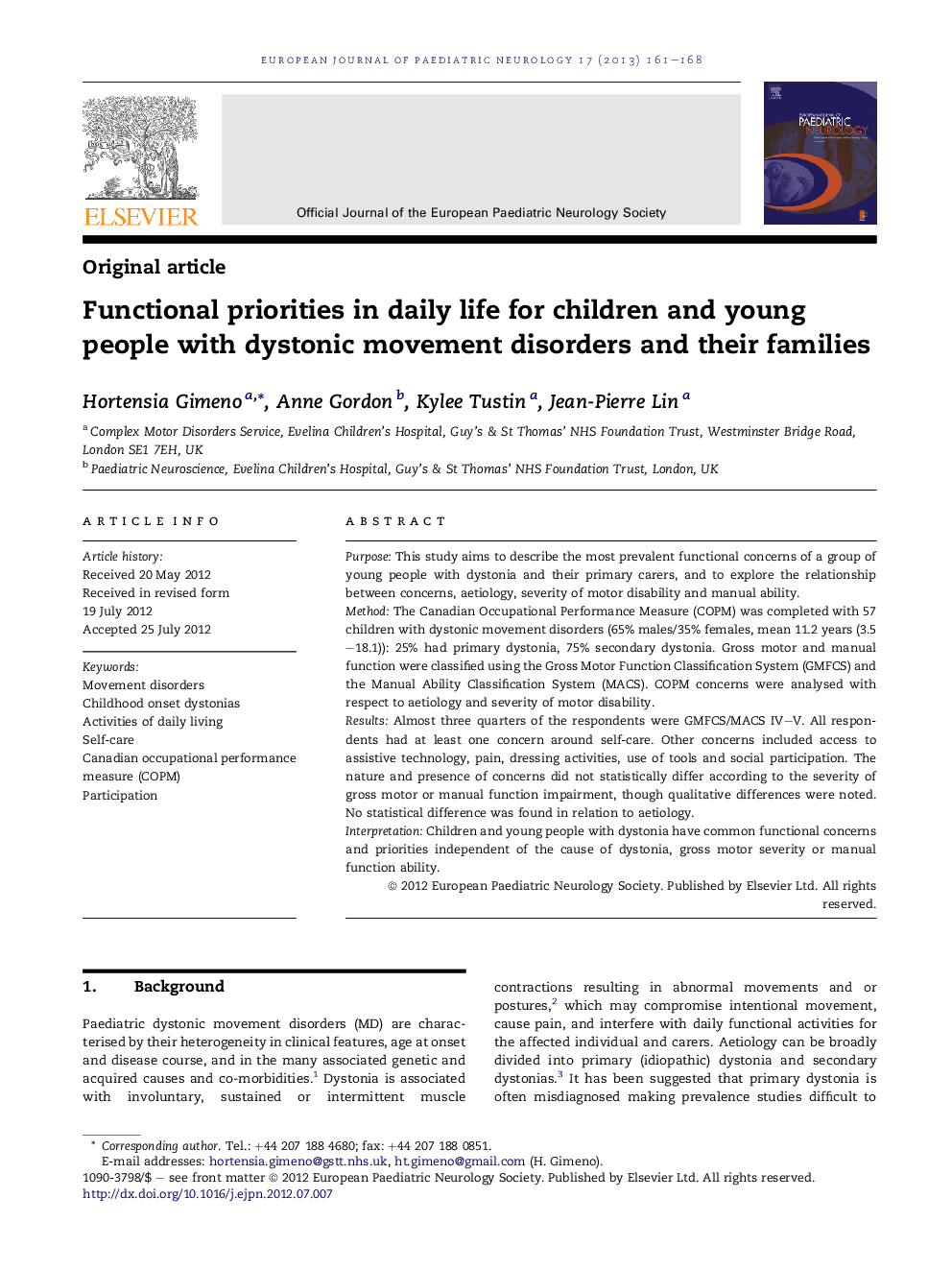| کد مقاله | کد نشریه | سال انتشار | مقاله انگلیسی | نسخه تمام متن |
|---|---|---|---|---|
| 3053758 | 1580027 | 2013 | 8 صفحه PDF | دانلود رایگان |

PurposeThis study aims to describe the most prevalent functional concerns of a group of young people with dystonia and their primary carers, and to explore the relationship between concerns, aetiology, severity of motor disability and manual ability.MethodThe Canadian Occupational Performance Measure (COPM) was completed with 57 children with dystonic movement disorders (65% males/35% females, mean 11.2 years (3.5–18.1)): 25% had primary dystonia, 75% secondary dystonia. Gross motor and manual function were classified using the Gross Motor Function Classification System (GMFCS) and the Manual Ability Classification System (MACS). COPM concerns were analysed with respect to aetiology and severity of motor disability.ResultsAlmost three quarters of the respondents were GMFCS/MACS IV–V. All respondents had at least one concern around self-care. Other concerns included access to assistive technology, pain, dressing activities, use of tools and social participation. The nature and presence of concerns did not statistically differ according to the severity of gross motor or manual function impairment, though qualitative differences were noted. No statistical difference was found in relation to aetiology.InterpretationChildren and young people with dystonia have common functional concerns and priorities independent of the cause of dystonia, gross motor severity or manual function ability.
Journal: European Journal of Paediatric Neurology - Volume 17, Issue 2, March 2013, Pages 161–168